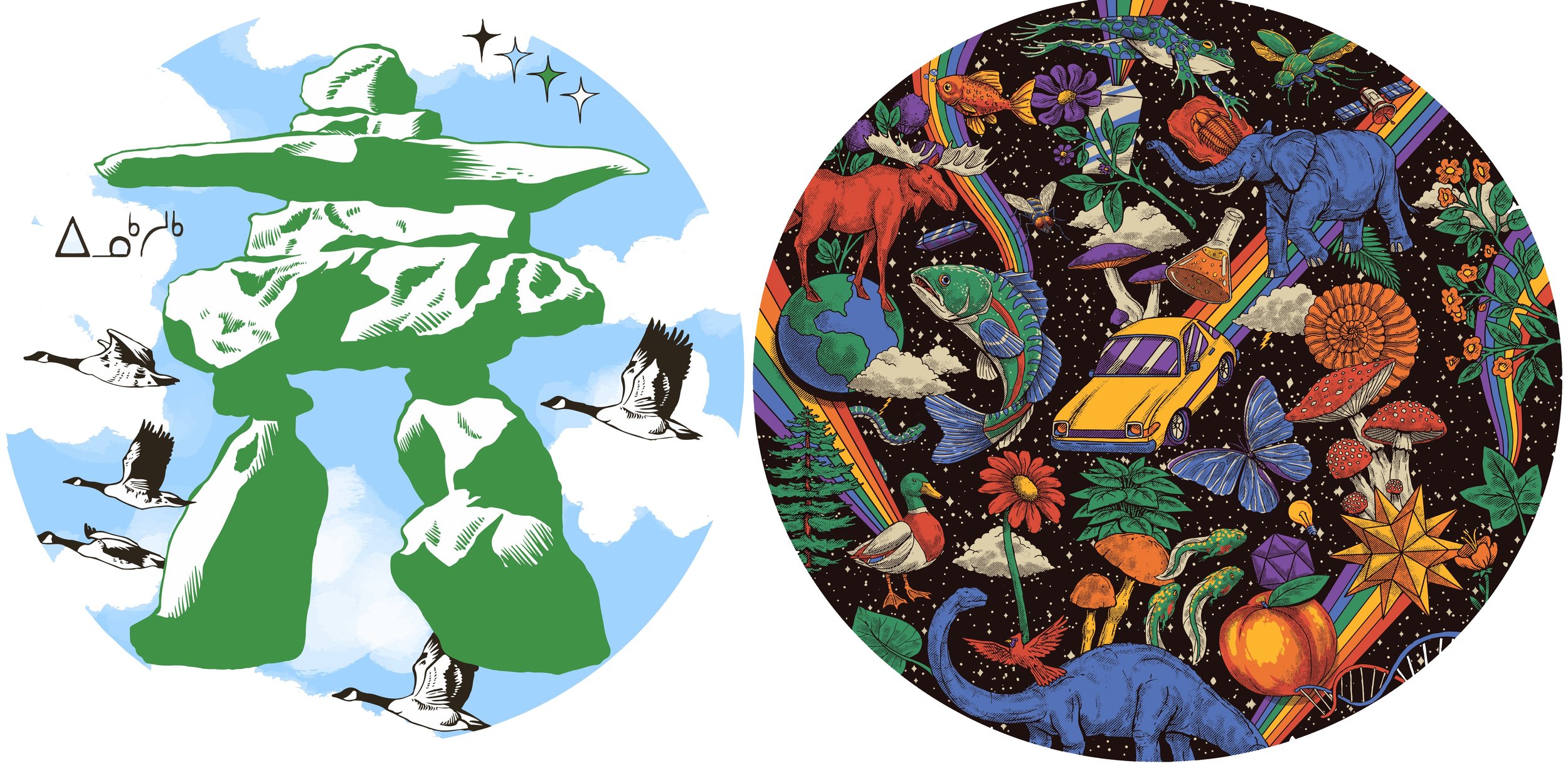Sometimes, you hear a phrase, and it just makes you think about how different pieces of our world connect, perhaps in ways we don't always see at first glance. We often talk about things that hold together, things that provide a kind of steady support, or elements that ensure a smooth path forward. It's interesting, too, how even very simple ideas can spark thoughts about deeper meanings, like when you consider what keeps something from coming apart, or what makes a long journey feel like it flows easily.
You know, it's almost as if some words, when put together, can make us ponder the very nature of stability and togetherness. Think about how a small part can make a big difference in keeping larger structures firm. Or consider how a place of learning might offer a kind of steady foundation for young people as they grow. There are these quiet forces at play, very much like unseen helpers, that make sure things work as they should, providing a sort of quiet reassurance.
So, when we look at something like "cotter ellis sister," it might seem a bit unusual at first. But if we break it down, looking at the individual pieces and what they represent, we might find some rather interesting parallels to how things are joined, how paths are made clear, and how support systems function in our daily lives. It's about seeing the threads that tie things up, you know, making sure everything stays put.
- Brooke Shields Grandchildren
- Chad Mcqueen 2022
- Angelina Jolie Halloween
- Corey And Leah Now
- Four Ingredients For Natural Mounjaro
Table of Contents
- What is a Cotter, Really?
- How does a Cotter Help Secure Things?
- The Educational Path - Is it a Cotter Ellis Sister?
- Living and Learning in a Quiet Place - What's the Connection to Cotter Ellis Sister?
- Different Names for a Cotter - What Does That Tell Us?
- The Idea of Holding Things Together - A Cotter Ellis Sister Perspective
- Why Do These Connections Matter?
- What Lessons Can We Learn From a Cotter Ellis Sister?
What is a Cotter, Really?
When you hear the word "cotter," your mind might go to something very specific, something that works to keep things from moving. Basically, it's a small but mighty piece, like a kind of pin or a wedge, that gets put into an opening. Its main job, you see, is to make sure something else stays put, to hold different parts together without any unwanted shifting. It's a rather clever bit of engineering, designed to offer a firm hold.
Think about it like this: you have two pieces that need to stay joined, maybe so they don't slide apart or spin freely. A cotter, which can look like a simple bolt or a key, slips through a hole that goes through both of these parts. Once it's in place, it acts as a kind of stopper, keeping everything snug. It's a fundamental idea in keeping things assembled, something that works quietly in the background, providing a sort of anchor.
So, in essence, a cotter is a tool for securing, a way to make sure there's no relative movement between parts. It's a small thing, but its purpose is quite big in the world of keeping things steady. It offers a flat surface that presses against the inside of the hole, which helps it to do its job of fixing things tightly. It’s pretty straightforward, really, but very effective.
- De Donde Son Los Papas De Ariana Grande
- Christina Applegate Book 2024
- Alexei Mentzer Judge Judy Grandson
- 911 Cast New Season
- Claire Dutton In 1883
How does a Cotter Help Secure Things?
The way a cotter helps to secure things is actually quite simple, yet effective. Imagine you have a shaft and a wheel, and you want that wheel to stay on the shaft without slipping off. You'd make a hole through both, and then you’d insert this special pin, this cotter, through those aligned holes. It’s like a little gatekeeper, stopping anything from going past it. It makes sure that the parts are held close, giving a kind of temporary but firm connection. It's a very practical solution, actually, for keeping things where they belong.
It works by creating a point of resistance. Once it's pushed through the opening, its shape, whether it's a wedge or a split pin, means it can't easily come back out without a bit of effort. This resistance is what provides the security. It's a pretty neat trick, ensuring that parts remain fixed and don't experience any unplanned motion. So, when we consider "cotter ellis sister" as a concept of connection, this securing function is a key part of what that might mean.
In a way, it's about making sure there's no give, no unwanted looseness. It provides a kind of quiet strength, a way to keep things from rattling or separating. This simple piece, this cotter, becomes the reason why something stays together, why it functions as a single unit. It's a good example of how a small component can have a really big impact on the overall stability of a system. It’s quite important, too, for many different kinds of constructions.
The Educational Path - Is it a Cotter Ellis Sister?
Now, let's think about something completely different: an educational path. We're talking about a place that looks after children, from when they are just six weeks old all the way up to when they are in their final year of high school, which is grade twelve. This kind of setup aims to provide a path for learning that feels very, very smooth, almost like a continuous flow without any bumps or sudden stops. It's about growing up within a single, supportive environment.
Could this educational journey, this idea of a continuous path, be thought of as a "cotter ellis sister"? In a way, yes. Just as a cotter holds mechanical parts together, a good educational system holds a child's learning experience together, making it cohesive. It provides the connections, the steady progression from one stage to the next, ensuring that there are no gaps where a child might feel lost or disconnected. It’s about building knowledge and skills in a way that feels natural and connected.
This seamlessness is a lot like the function of a cotter. It prevents the educational process from breaking apart into disconnected pieces. It ensures that the learning builds upon itself, year after year, providing a consistent framework for growth. So, in this sense, the "cotter ellis sister" might represent that supportive, linking element that keeps the entire learning experience whole and effective, moving forward without a hitch. It's a system that truly supports development.
Living and Learning in a Quiet Place - What's the Connection to Cotter Ellis Sister?
There's another interesting piece to this puzzle: the idea of students having the chance to live and learn in a quiet, country-like place. This isn't just about academics; it's about the whole experience of growing up and figuring things out in an environment that might be very different from a busy city. It offers a particular kind of setting where daily life and schooling happen side by side, creating a unique backdrop for personal development. It’s a very specific kind of place, really.
How does this relate to "cotter ellis sister"? Well, a rural setting, with its calm and often close-knit community, can act like a cotter itself. It provides a stable, grounding influence. It connects the living experience directly with the learning experience, making them one integrated whole. The environment itself becomes a part that holds the educational journey together, giving it a distinct character and perhaps a sense of peace that supports deep learning. It's a pretty strong connection, if you think about it.
This kind of setting might also foster connections among students and with their surroundings that are different from those found elsewhere. These connections, the bonds formed in a shared, quieter space, could be seen as the "sister" aspect—a supportive, parallel element that works alongside the formal education. It’s about how the place itself helps to secure the overall growth and well-being of the young people. It’s a rather unique way to approach learning and living, offering a kind of quiet strength.
Different Names for a Cotter - What Does That Tell Us?
It's interesting how something can have many names, isn't it? A cotter, for example, is also known by other names depending on where you are. In some places, it’s called a split pin, which gives you a pretty clear picture of what it looks like. In the United States, you might hear it referred to as a cotter key. These different names, you know, they all point to the same basic idea: a small piece used to hold things firmly together. It's a simple concept, but it has a lot of different ways of being described.
The fact that it has synonyms, that people use different words like "bolt," "wedge," or "key" to describe similar parts that secure things, tells us a little something about its common use and widespread need. It means that the function of holding parts together, making sure they don't move relative to each other, is a universal requirement in many different fields. It shows how important this simple item is, really, that it has so many ways to be named and understood across different areas and languages.
So, whether you call it a cotter, a split pin, or a cotter key, the core purpose remains the same. This variety in naming, in a way, reflects the many different contexts in which this simple securing device is used. It's a reminder that fundamental ideas often have many expressions. When we think of "cotter ellis sister," this variety suggests a broad applicability of the idea of connection and support, something that can take many forms but always serves a similar purpose.
The Idea of Holding Things Together - A Cotter Ellis Sister Perspective
The main idea that comes through with a cotter is its job of holding things together. It's about preventing motion between parts, making sure that a connection stays firm. This concept of keeping things united, of providing a solid link, is a very powerful one. It's about stability, about ensuring that individual pieces work as one unit. It's a very practical kind of togetherness, actually.
From a "cotter ellis sister" perspective, this idea of holding things together can extend beyond just mechanical parts. It can represent the bonds within a community, the way a family stays connected, or how a school system creates a cohesive learning environment. It’s about the elements that prevent things from falling apart, the forces that keep everything aligned and moving in the same direction. It’s a pretty fundamental concept, really, in many different aspects of life.
So, a "cotter ellis sister" might symbolize that quiet, yet very important, force that provides cohesion. It's the element that makes sure there's no slippage, no unexpected separation. It's about the deep-seated connections that allow different parts, whether they are physical components or people in a group, to function as a unified whole. It’s a subtle but strong kind of influence, making sure everything stays put and works as it should.
Why Do These Connections Matter?
It's fair to ask why these kinds of connections, like those provided by a cotter, or the seamlessness of an educational path, truly matter. Well, for one thing, they bring about reliability. When parts are held firmly, you can count on them to work as expected. There's less chance of things breaking down or coming apart at an inconvenient moment. This kind of dependability is very, very important in pretty much everything we do, isn't it?
These connections also create a sense of continuity. In an educational setting, a smooth path means that learning flows naturally from one year to the next, building on what came before. There are no sudden breaks that might disrupt a child's progress or make them feel out of place. This continuity helps to build a strong foundation, allowing for steady growth over a long period. It's a rather gentle way to ensure progress.
Furthermore, strong connections provide support. Just as a cotter supports the alignment of mechanical parts, the various elements of a supportive environment, like a rural school setting, support the students. They help them feel secure, provide a sense of belonging, and give them the resources they need to thrive. These supportive links are incredibly valuable, making sure that individuals feel held and cared for as they grow. They really do make a big difference.
What Lessons Can We Learn From a Cotter Ellis Sister?
So, what can we take away from thinking about "cotter ellis sister" in this way? Perhaps one lesson is the power of simple, yet effective, support. A cotter is a small thing, but its role in holding larger structures together is absolutely crucial. This reminds us that even seemingly small acts of connection or support can have a huge impact on the stability and success of a bigger system. It's a pretty humble lesson, but a very powerful one.
Another lesson might be about the value of continuity and smooth transitions. The idea of a "seamless educational journey" is about making sure that growth is uninterrupted, that one stage flows naturally into the next. This kind of thoughtful planning, which ensures that everything fits together well, is something we can apply to many areas of our lives. It’s about making things easy, you know, for those who are experiencing them.
And finally, thinking about "cotter ellis sister" can highlight the importance of fundamental connections. Whether it's a physical pin holding machinery firm, or the bonds that tie a community together, these essential links are what give strength and purpose. They are the quiet, often unseen, elements that keep everything from wobbling apart and ensure that things can move forward with confidence. It’s a good way to look at how things truly function.
This discussion has explored the concept of "cotter ellis sister" by drawing parallels from the very practical definition of a "cotter" as a securing pin and the description of a seamless educational journey in a rural setting. We've considered how a cotter functions to hold parts together, preventing unwanted movement, and how this idea can be extended metaphorically to the continuity and support found in a comprehensive educational experience. The various names for a cotter were also touched upon, suggesting the widespread need for such connecting elements. Finally, we looked at why these kinds of connections are important for reliability, continuity, and support, and what lessons can be learned from these ideas.
- Cillian Murphy And Emily Blunt Movie
- What Happened To Todd Milsap
- Alexei Mentzer Judge Judy Grandson
- Ozempic Libido
- Bk Whopper Jr 2 For 5

.jpg?format=2500w)
